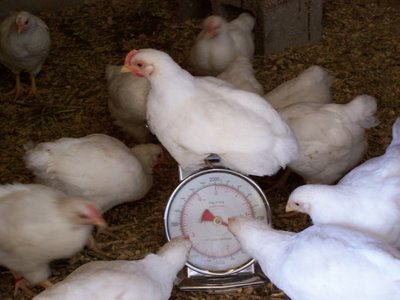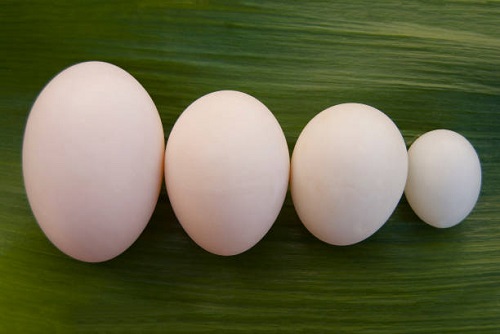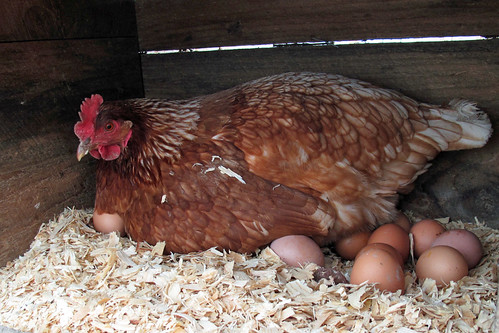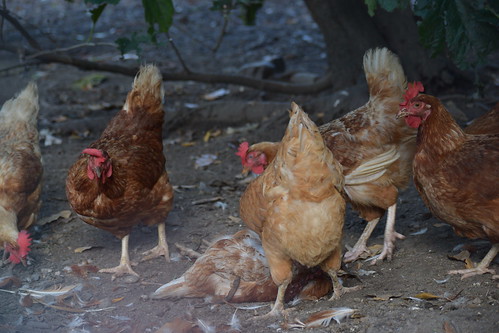Broiler chickens are a common breed of chicken that is raised in large-scale chicken farms and are typically slaughtered after 6 weeks. There are many reasons why broiler chickens do not grow as well as they should.
In this blog, we’ll be going through the top 5 reasons why broiler chickens might be growing poorly, and the solutions to those issues.
My experiences as a broiler farmer have given me the opportunity to recognize some of the reasons behind the poor growth performance of broilers. A few of these reasons are discussed below:
1. Poor Genetic Quality
Genetics plays a major role in broiler growth performance. Both slow-growing and fast-growing chickens pass this on to their offspring. When you procure broiler chicks from parents that possess poor growth quality, the chicks would perform worse than their parents. Some will be so small (runts), and won’t grow no matter what you do.
This can affect your bottom line since slow or runty chickens will result in low average daily gain, which will increase production costs for feed and drugs.
Solution: To grow big, fast and healthy broilers, you need to buy broiler chicks from hatcheries with healthy and vigorous parent stocks that are well balanced in growth rate and feed conversion. Ask your fellow broiler farmers for hatchery recommendations and you can check the internet for reviews.
Also Read: Top 5 Reasons Why Inbreeding is Bad
2. Poor Feeds & Feeding
The quality of feed you give to your chickens determines their growth performance. Feeds made with expired, low-quality feed ingredients will give poor results.
For instance, using burnt or immature corn grains or soyabean to prepare broiler diets (broiler starter, grower and finisher) will reduce the nutritional compositions such as metabolizable energy and crude protein of the feed.
The nutrients would not be available for the chickens to use and cause serious malnourishment to the broilers that consume them. The result is poor growth and sometimes death.
A feed mill could erroneously or intentionally produce poor quality feeds using the wrong feed formulas or poor feed ingredients. Farmers who are unaware of this will give these feeds to their broilers. Unfortunately, the birds fed with these feeds will have slow growth and weight addition.
Some millers may even miss out on some premix and additives or ingredients because they want to optimize their profit. Don’t think these do not happen—they do!
Solution: Ensure that you buy poultry feeds produced from reputable livestock feed millers with excellent track records. If possible, take the feed samples to a nutritional lab for analysis. You should also store your poultry feeds in a dry room and the bags should not have direct contact with the floor. Place them on wooden or plastic pallets.
You can also formulate feed for your broilers. The advantage of milling the feed yourself is that you are sure of what you’re giving your birds.
3. Overcrowding
Overcrowding is simply keeping more than the required or recommended number of chickens in a pen. Apart from poor growth performance, other negative effects of overcrowding are fast litter wetness and bad smell, increased feed conversion ratio (FCR) and increased mortality rate.
Overcrowding increases the competition for feed and gives room for bullying where the bigger chickens fight and prevent others from eating from the feeding trough or drinking water. This eventually leads to lower feeding rates and starvation. Apart from recording poor body weights, you will also record more chicken deaths (mortality).
Solution: Don’t overstock your pen with broilers. It is better to understock than to overstock the pen. The ideal floor space requirement for broilers in a deep-litter system is 15 birds per square meter (15 birds/m2) and don’t forget feeders and drinkers.
Also Read: Floor Space Requirements for Broilers + Calculator
4. Underfeeding
Underfeeding is not good for any animal, especially broilers. It is a common practice among broiler farmers to underfeed broilers. For example, when they are expected to give 8 kg of feed to 100 broilers per day in the third week, they give 4 kg of feed instead. Underfeeding your broilers will result in slow growth and poor body weight because of the deprivation of adequate feed.
Solution: Don’t underfeed your chicken and ensure you follow the chart given to you by the hatchery or use this broiler feed intake and growth chart.
5. Diseases
You should know that a sick chicken (or a bird that gets sick regularly) will not perform well. Diseases will reduce appetite and disturb feed metabolism and other vital body functions. When you have broilers that fall sick often, such birds will not grow well or convert feed well.
Solution: Ensure that you vaccinate your birds against diseases and give them the appropriate drug at the right time. Vaccinate your birds against Marek’s Disease, Infectious Bronchitis Newcastle Disease and Infectious Bursal Disease (Gumboro). Check this vaccination chart for broilers for more.
The major reasons why most broilers are not growing big (as expected) have been explained above with solutions. Therefore, if you are faced with this problem, you can apply those solution tips.
Kindly note that the most important factors that determine the performance of broilers are broiler breed type, quality of chicks and feed. If you get it right in these three areas, you will maximize your profits on the chickens.




how can I get broiler free from even growth.
Why even growth in broiler chicken
so helpful and informative
very educative,thank you
This was so helpful thanks alot
My chickens does not grow grow according their schedule